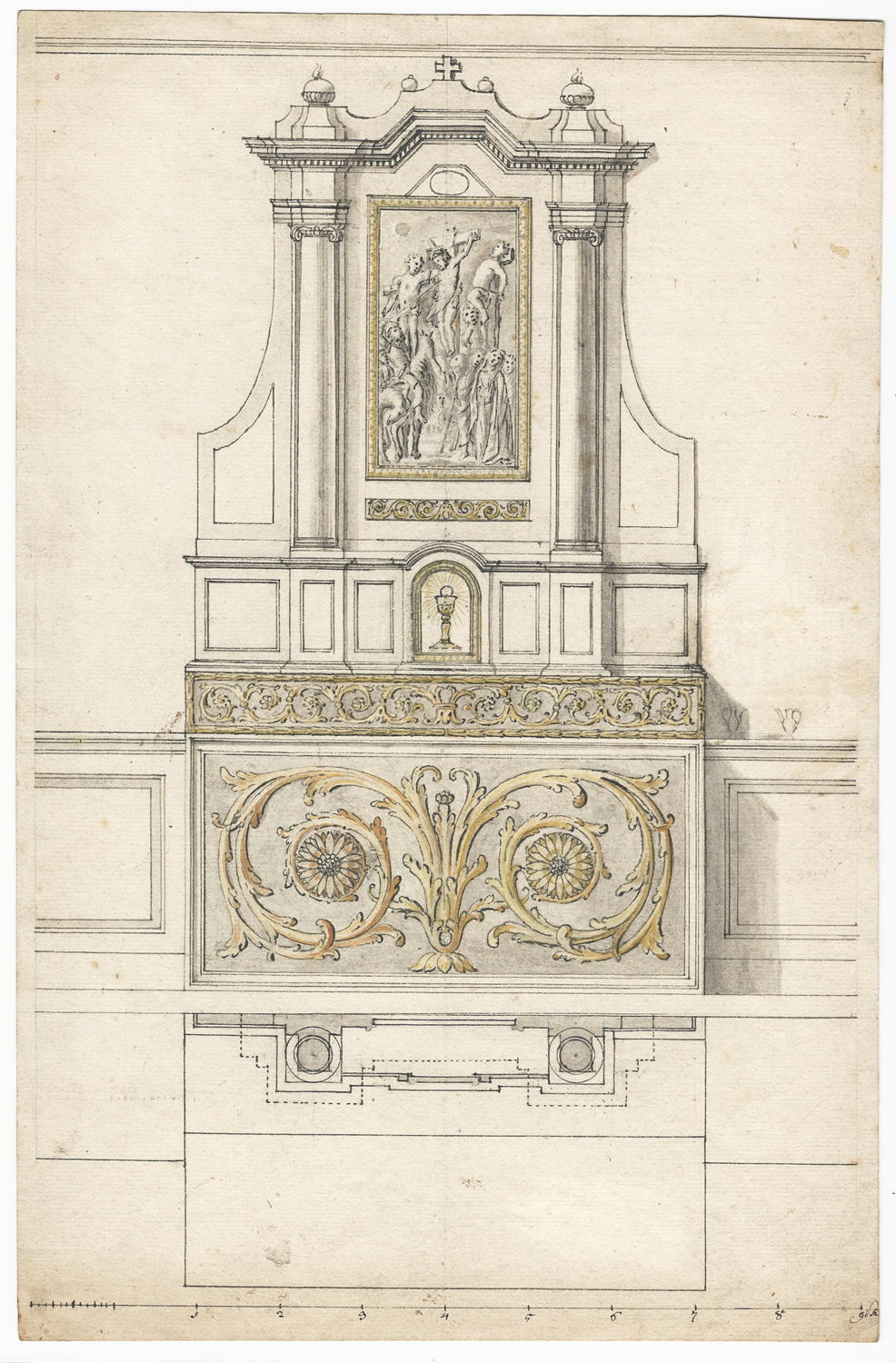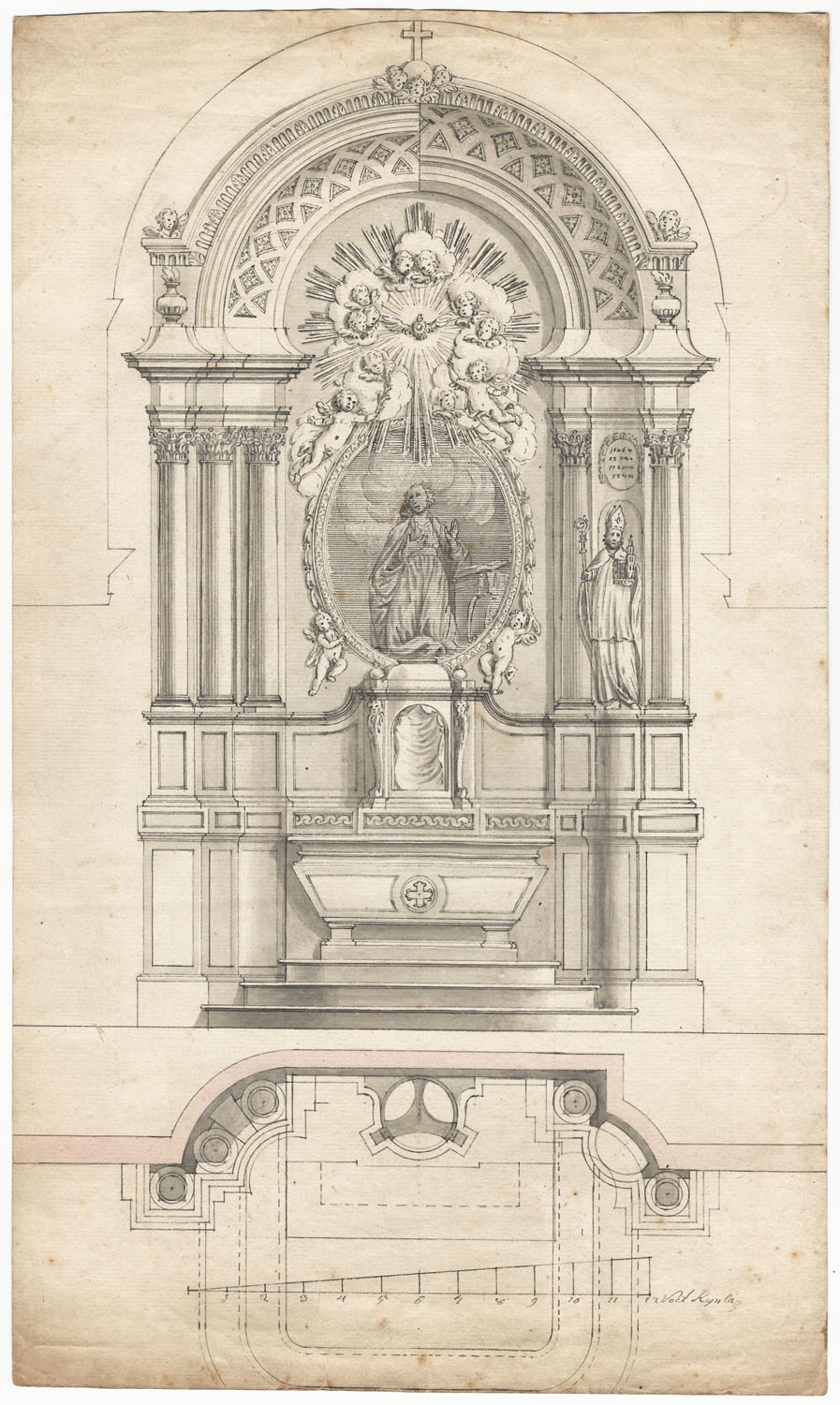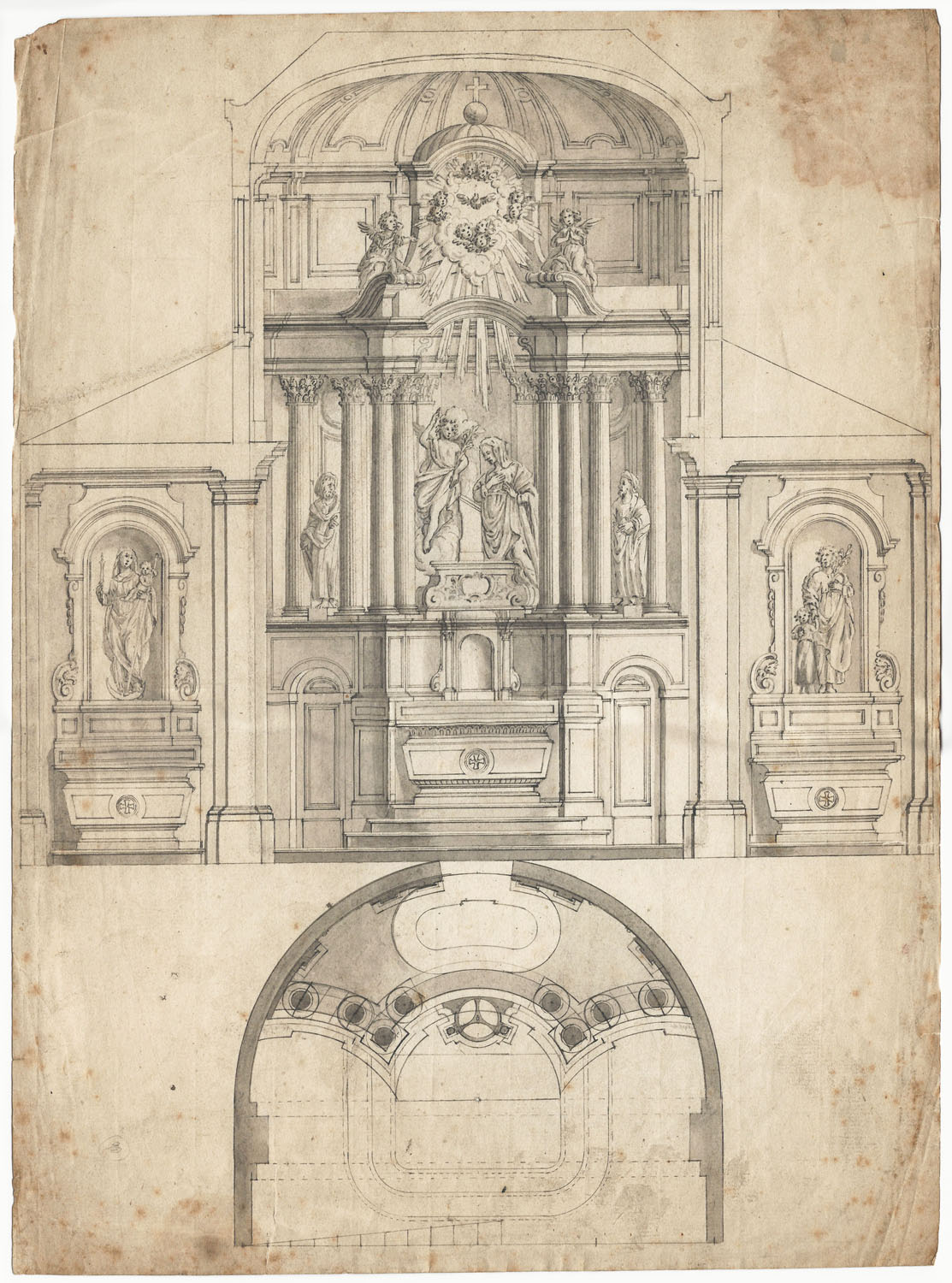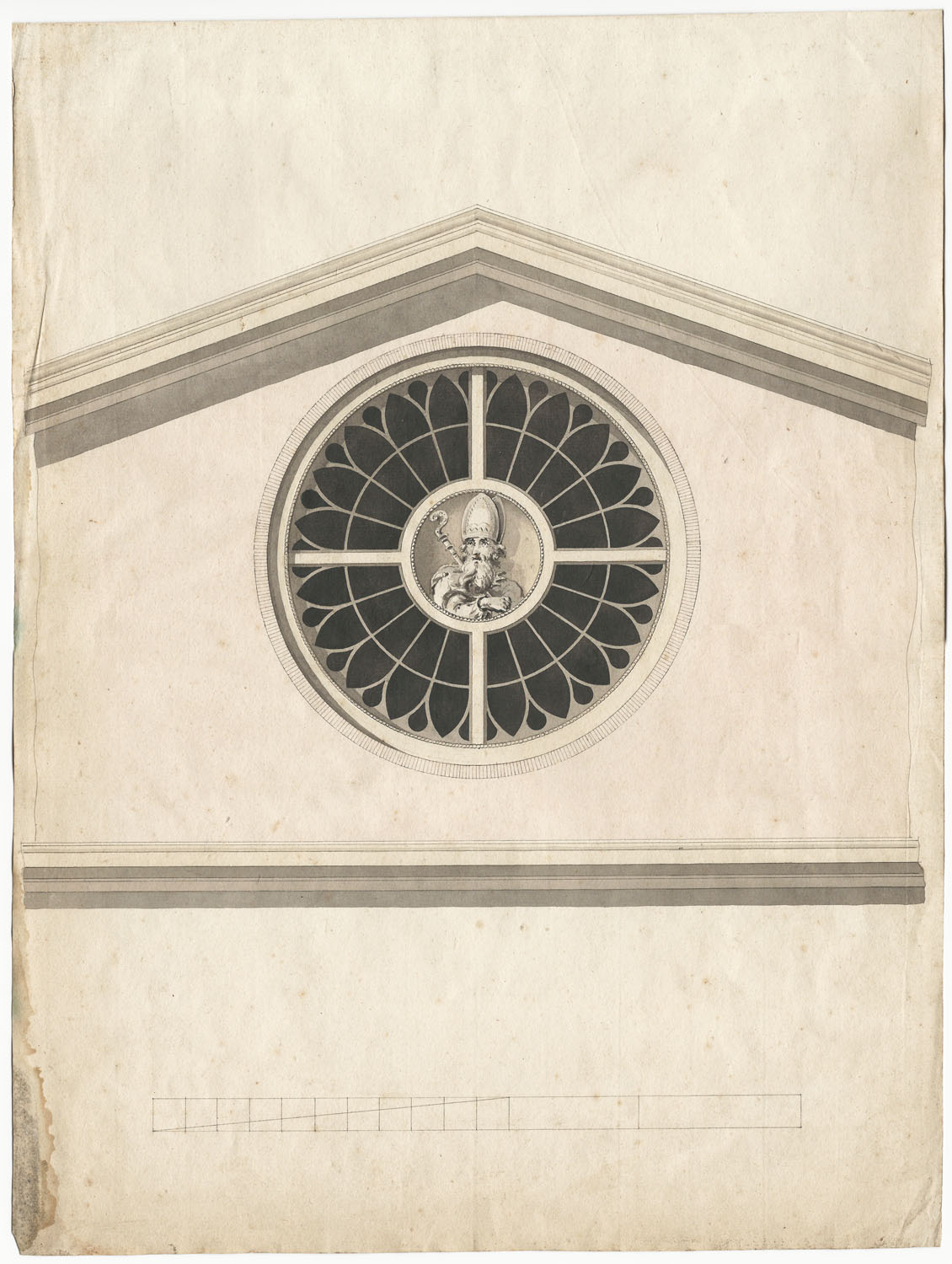DUTCH SCHOOL, c.1780
Dutch School, c.1780
Five designs for altars and a pediment in Roman Catholic churches
Pencil, pen and grey ink, grey wash, 393 x 247 mm, watermark French lily with letters WR underneath; pencil, pen and grey ink, grey and yellow wash, 414 x 269 mm, watermark shield with Strassbourg bend, crowned with lily; pencil, pen and grey ink, grey and pink wash, 461 x 274 mm, watermark D&C Blauw; pencil, pen and grey ink, grey wash, 453 x 333 mm, watermark crowned shield with French lily; pencil, pen and grey ink, grey and black wash, 491 x 368 mm (upper edge folded over), watermark D&C Blauw
Two sheets with indications of measurements in ‘Voet Rynlands’
Provenance
Private collection, The Netherlands
***
This is a rare group of five designs for altars and a pediment for Roman Catholic churches. Two sheets have indications in ‘Voet Rynlands’, the Rhineland foot, originally used in the Hoogheemraadschap van Rijnland, the area around Leiden, although later the Rhineland foot was adopted by the whole of Holland. The official religion of Holland was Protestantism, although Catholicism was tolerated by authorities, provided the churches were not recognisable as such from their exteriors, which gave birth to the phenomenon of the ‘schuilkerk’. The most famous of these is the Onze-Lieve-Heer-op-Solder in Amsterdam, dating to 1663 and currently a museum.
During the second half of the eighteenth century, Catholics were however increasingly allowed to build recognisable churches – their rights to do so were officially established in 1798. The designs presented here show exceptionally rich religious interiors, possibly connected with the Catholic church in Rijswijk, built around 1784 (and demolished in 1906).1 The design for the pediment, including a bust of St Willibrordus, who was particularly worshipped in The Netherlands, might date to a slightly later period, and could conceivably be connected to the Old-Catholic Jansenist Church of the Old-Episcopal Clerezij.
SOLD TO THE KONINKLIJK OUDHEIDKUNDIG GENOOTSCHAP (KOG), RIJKSMUSEUM, AMSTERDAM
1. With thanks to Prof. Dr. Paul H.A.M. Abels for his invaluable remarks about these drawings.




